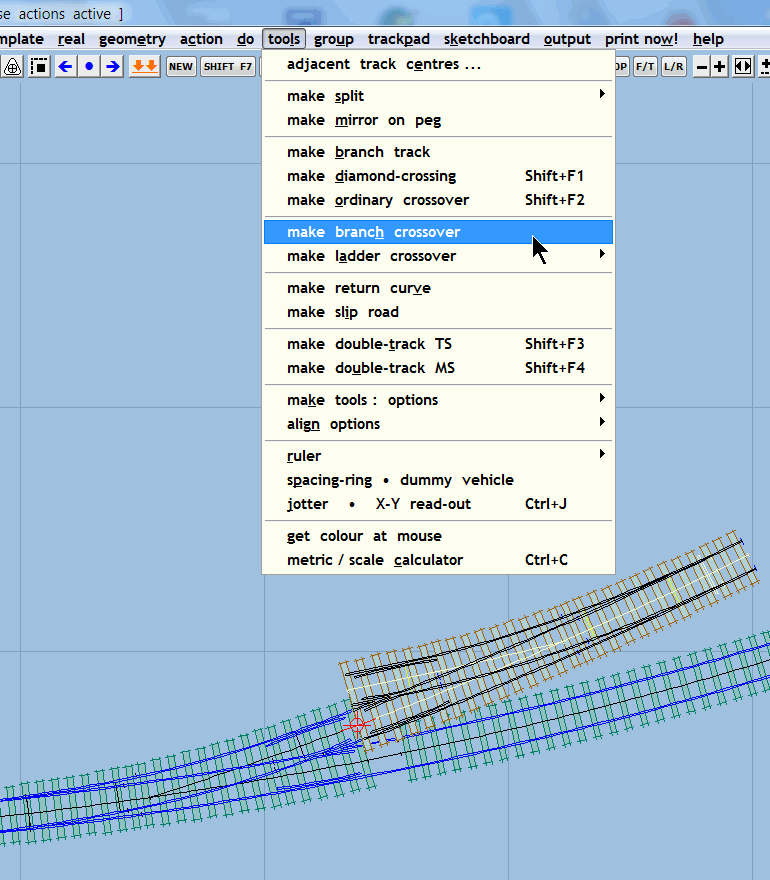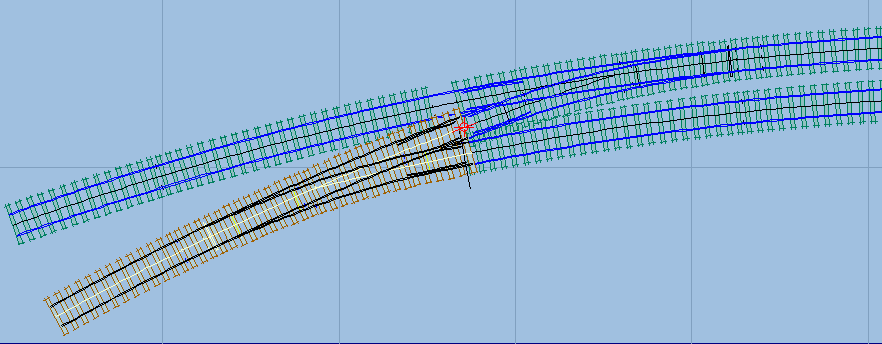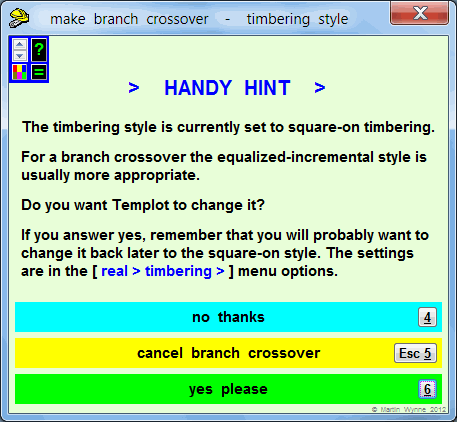Templot Club Archive 2007-2020
|
|||
| author | remove search highlighting | ||
|---|---|---|---|
|
posted: 30 Jun 2014 18:24 from: Martin Wynne
click the date to link to this post click member name to view archived images |
There is often a requirement for this formation: 2_041131_520000000.png  2_020547_020000000.png  Old hands won't have much trouble creating these -- make an ordinary crossover, invert the handing (CTRL-X), and then peg MXP to TXP (CTRL-7 to CTRL-5). But I thought it might make a useful built-in function for beginners, so I have added it. Following suggestions from members it has been given the name "branch crossover". You could of course simply make branch track and insert a turnout in it. But you would then need to roam it into alignment with the double track, whereas the above method does that automatically. Unlike an ordinary crossover there isn't usually a reverse curve at the centre, so in this case curviform V-crossings are acceptable. Note that for accuracy the double-track section should be created as such from the first turnout and adjusted for length, rather than doing make branch track on the second turnout. This formation works better with equalized timbering rather than the default square-on style, so you see this option: 2_041131_530000001.png  This function is available in program update 211a and later. regards, Martin. |
||
|
posted: 3 Jul 2014 12:15 from: Brian Nicholls
click the date to link to this post click member name to view archived images |
Martin Wynne wrote: Following suggestions from members it has been given the name "branch crossover".Hi Martin, Perhaps we (or anyone that can help) should write a "Glossary of Terms" for Templot2 and put it in the companion. All the best, Brian. |
||
| Please read this important note about copyright: Unless stated otherwise, all the files submitted to this web site are copyright and the property of the respective contributor. You are welcome to use them for your own personal non-commercial purposes, and in your messages on this web site. If you want to publish any of this material elsewhere or use it commercially, you must first obtain the owner's permission to do so. |